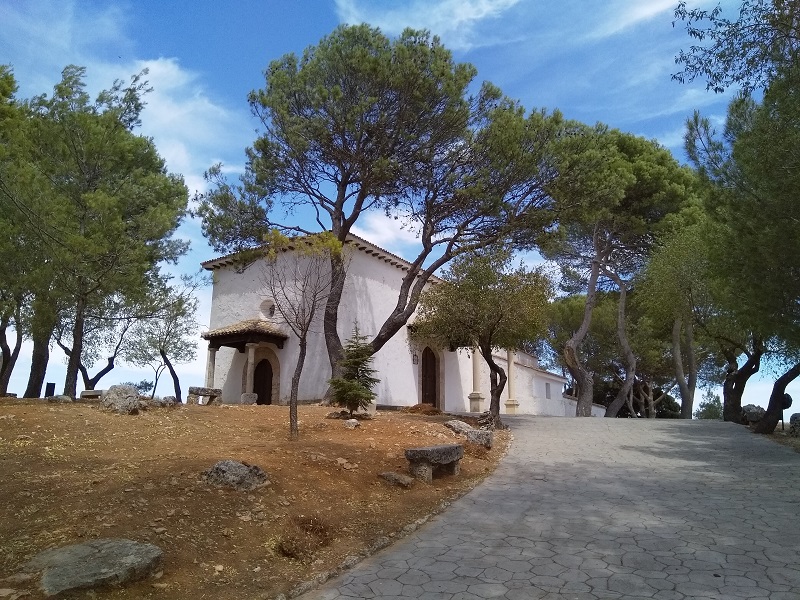Ermita de San Sebastián is a religious monument and place of cultural interest in Mondéjar, Spain. It’s situated on the outskirts of the town and sits on a small hill surrounded by open countryside.
The views alone make the short walk from the town worthwhile and the grounds around the ermita have several benches to take advantage of if you want to sit in the sun and enjoy the tranquillity and natural beauty of the area.
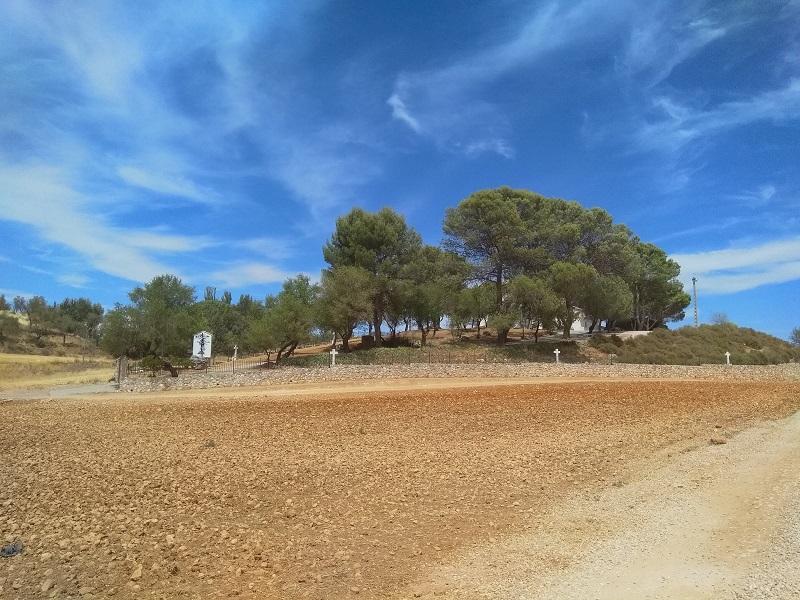
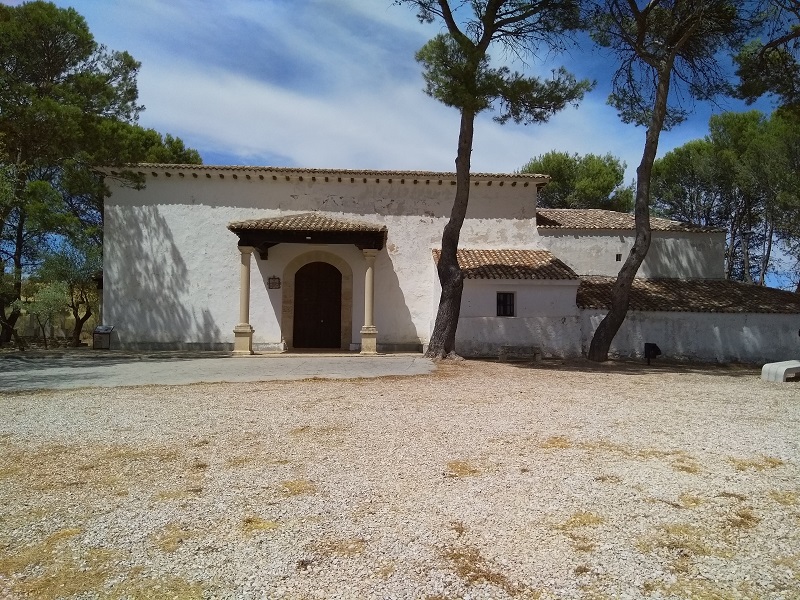
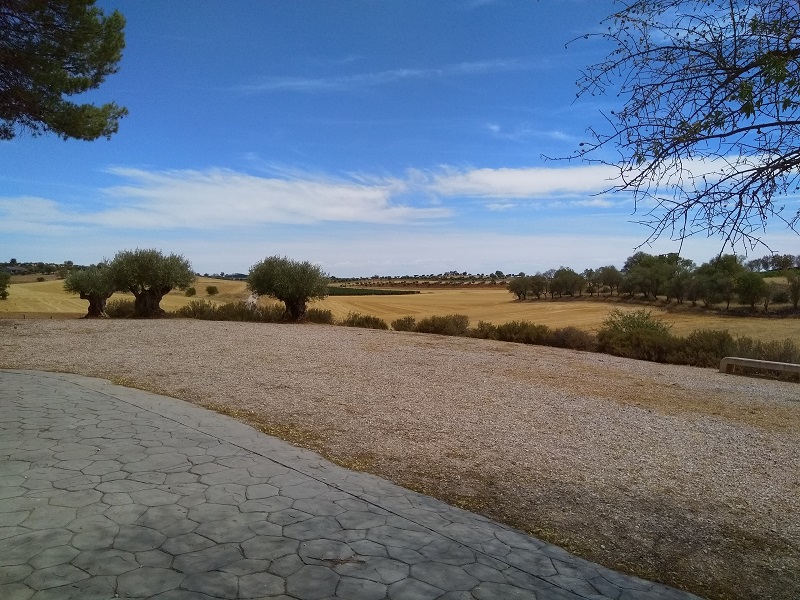
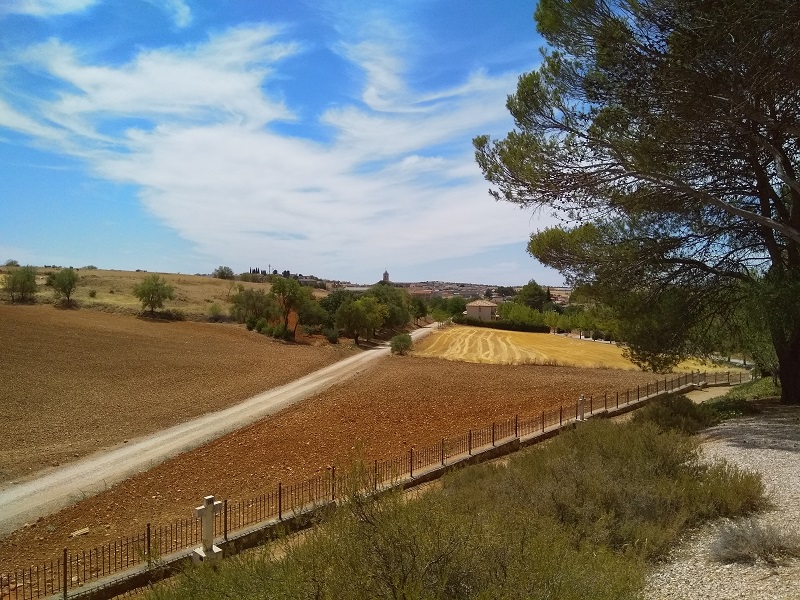
If you are unsure what an “ermita” is, don’t worry. You are not alone. I’d never encountered the word before I arrived at Mondéjar.
An ermita is a small (Catholic) chapel-like building. There are two of them in Mondéjar. The other one is the Ermita de San Pedro. It’s much smaller than the Ermita de San Sebastián and is situated close to the centre of the town. The Ermita de San Sebastián is easily the most interesting of the two.
Apparently, one of the most important parts of the ermita is the Cripta de los Judíos (Crypt of the Jews). It contains more than 70 sculptured figures that represent various aspects of the Passion of Christ including the Washing of Feet and the Last Supper. The whole crypt is designed to create the feeling of being inside a cave or tomb. Unfortunately, when I visited the ermita I was unable to find any obvious way to enter the Cripta de los Judíos. Entering the main chapel was easy. The door was ajar when I arrived, but it was not possible to walk very far. There’s a set of iron bars a few feet inside that must be there to protect the religious artefacts. I think access to the crypt is probably granted via the doors on either side of the alter. With the bars in my way, there was no way to find out.
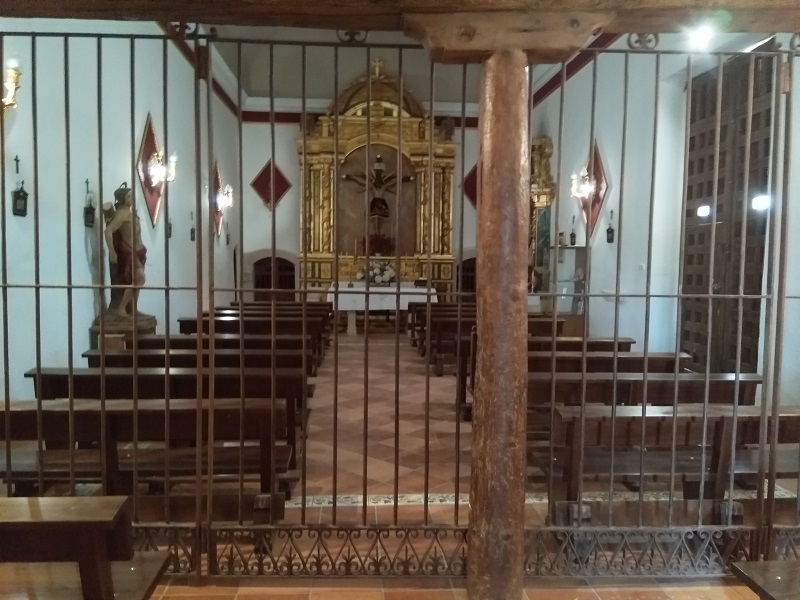
The ermita is very peaceful inside and there are a few pew-like benches available for anyone who wants to sit down. The religious atmosphere inside the Ermita de San Sebastián is enhanced by the sound of choir music. I couldn’t see any speakers but the main chapel area is quite small and probably takes up less than half of the building. I think the music probably comes from speakers hidden in a room on the other side of the wall.
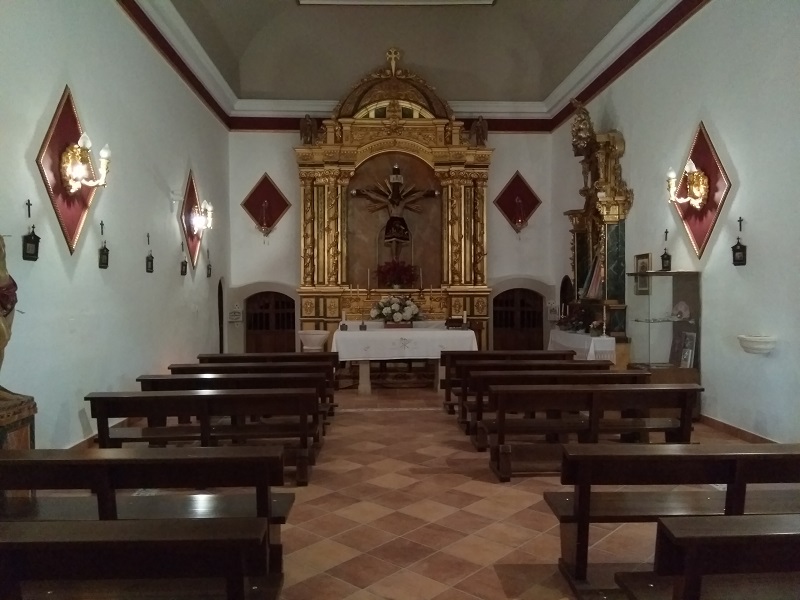
According to the information board beside the building, the Ermita de San Sebastián was built during the 16th Century by Íñigo López de Mendoza, the first Marquess of Santillana. However, this must be an error. According to my research, by the time the 16th Century arrived, Íñigo López de Mendoza (19 August 1398 – 25 March 1458) had been dead for over 40 years.
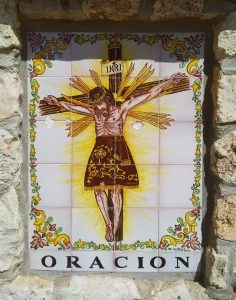
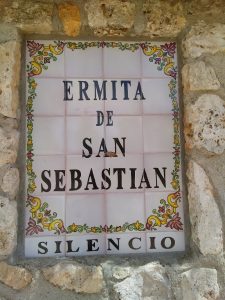 If you decide to go to Mondéjar and visit the Ermita de San Sebastián, try not to dash through the gates too fast and go rushing up the hill. There are decorative plaques made from tiles on either side of the gate. The one to the right of the gate urges visitors to adopt a respectful silence. The one to the left is more impressive. It bears a colourful representation of the Crucifixion and has the word “oracion” (prayer) underneath.
If you decide to go to Mondéjar and visit the Ermita de San Sebastián, try not to dash through the gates too fast and go rushing up the hill. There are decorative plaques made from tiles on either side of the gate. The one to the right of the gate urges visitors to adopt a respectful silence. The one to the left is more impressive. It bears a colourful representation of the Crucifixion and has the word “oracion” (prayer) underneath.
There’s another representation of the crucifixion embedded into a large rock to the left of the path as you pass through the gates. This one is constructed from metal instead of tiles. It’s worth taking some time to examine the workmanship because it’s incredibly clever. By removing sections from a black metal sheet and allowing the white background to show through, the artist has succeeded in making a very detailed work of art.
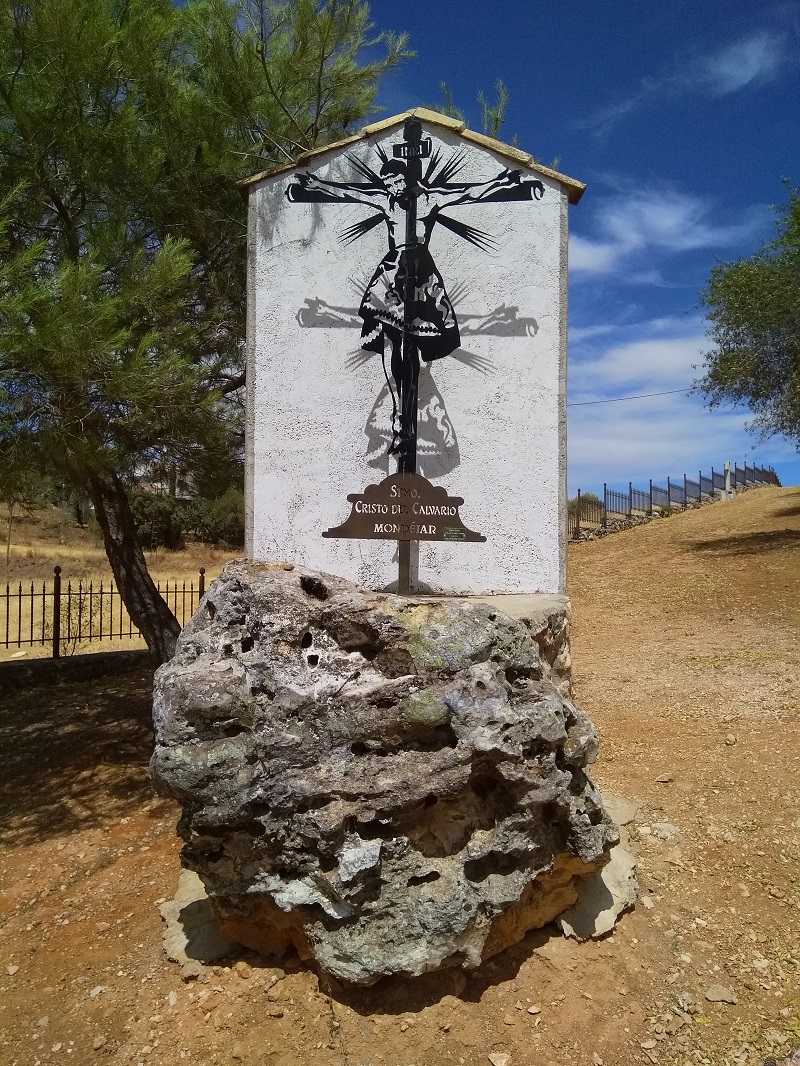
Unfortunately, when you enter the Ermita de San Sebastián the floor to ceiling wall of bars will make it impossible to take a close look at any of the works of art inside, but cast your eyes to the statue on the left of the chapel. It’s a representation of St. Sebastian with arrows hanging from his flesh.
Saint Sebastian (c. AD 256 – 288) was an early Christian saint who was martyred during the Roman emperor Diocletian’s persecution of Christians. Though he did prove to be a hard man to kill.
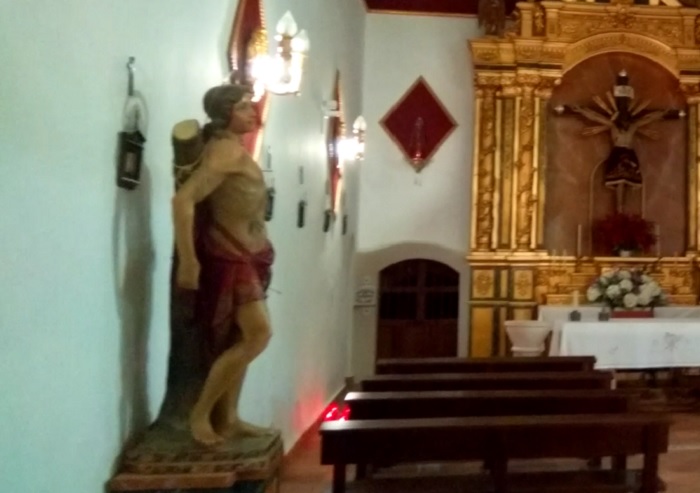
Sebastian was initially tied to a tree so Mauretanian archers could use his body for target practice. Miraculously, he survived the barbaric attempted execution and had his wounds healed by St. Irene of Rome.
After he was healed, Sebastian went to visit the Roman Emperor to warn him about his sins and ask him to change his ways. His words fell on deaf ears. Diocletian ordered his men to club Sebastian to death and then dump his body in the sewers.
Sebastian’s ordeal at the hands of the Mauretanian archers is the one that seems to inspire artists most of all.
How to Get to the Ermita de San Sebastián
The Ermita de San Sebastián is a 15-20 minute walk from the centre of Mondéjar. It should take less than five minutes if you are travelling by car.
[MAP]
– – – – –
– – –
– – –
– – – – –
